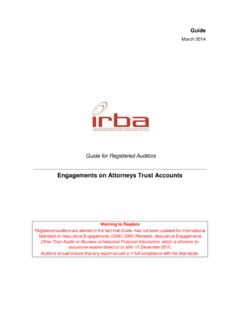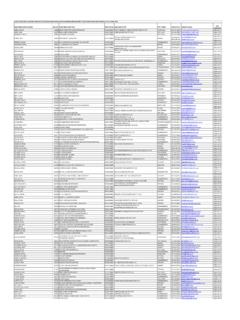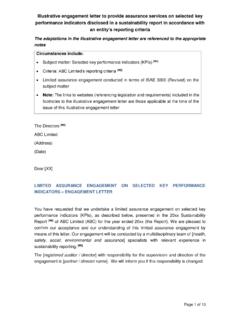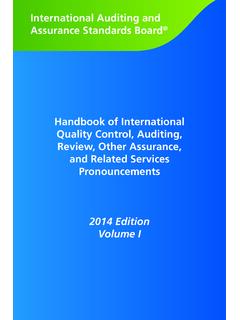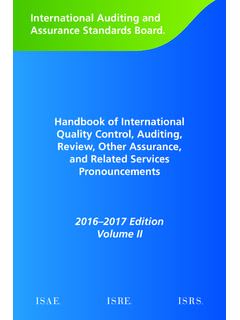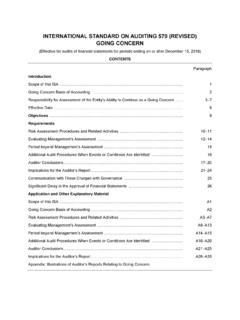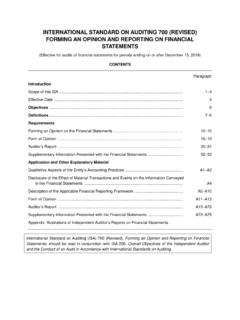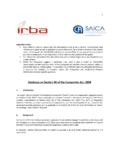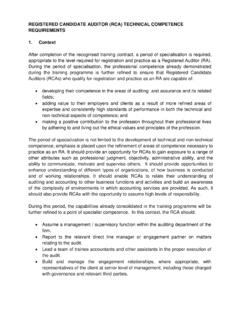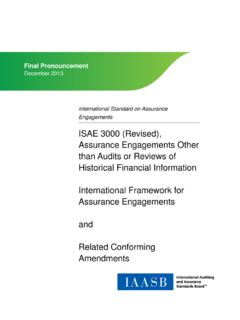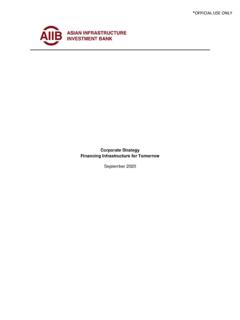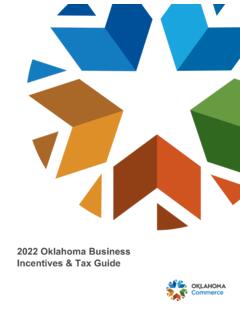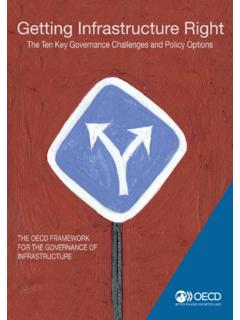Transcription of Combating Money Laundering and Financing of Terrorism
1 guide January 2011 A guide for Registered Auditors Combating Money Laundering and Financing of Terrorism Independent Regulatory Board for Auditors Johannesburg The purpose of this guide is to provide registered auditors with general guidance relating to Combating of Money Laundering and terrorist Financing . This guidance does not serve to provide a complete statement of the requirements and should be read in conjunction with the relevant legislation. Although reasonable care has been taken to ensure that the information contained in this guide is correct at date of issue, the Independent Regulatory Board for Auditors (IRBA) does not take any responsibility for the correctness of any of the interpretations of the law and other information in this guide . Users of this guide should obtain legal advice where necessary. The guide is divided into four parts: Part 1 briefly outlines the concepts of Money Laundering and Financing of Terrorism and the international and South African framework for anti- Money Laundering and Combating of Financing of Terrorism .
2 Part 2 focuses on the compliance obligations of registered auditors. Part sets out the obligations of those who are not classified as accountable institutions under the Financial Intelligence Centre Act, Act 38 of 2001, as amended (FIC Act), while the compliance obligations of those who are accountable institutions are discussed in Part Part 3 highlights the supervisory role of the IRBA under the FIC Act. Part 4 briefly addresses the responsibilities of registered auditors when conducting an audit. Registered auditors should be aware of, and consider this guide , in the context of their responsibilities as registered auditors. A registered auditor who does not apply the guidance in this guide should be prepared to explain how the objective of the legislation discussed in this guide , has been otherwise achieved. This guide is effective from 1 January 2011 and the document: Money Laundering Control: A guide for Registered Accountants and Auditors , issued June 2003, is hereby withdrawn.
3 Copies of this guide may be downloaded free-of-charge from the IRBA website: Copyright Independent Regulatory Board for Auditors 2011 All rights reserved. Permission is granted to make copies of this work provided that such copies, in whichever format, are for the purpose of registered auditors discharging their professional duties, for use in academic classrooms or for personal use and provided such copies are not sold for income, and provided further that each copy bears the following credit line: Copyright by the Independent Regulatory Board for Auditors. All rights reserved. Used with permission of the IRBA. Otherwise, written permission from the Independent Regulatory Board for Auditors is required to reproduce, store or transmit this document except as permitted by law. Combating Money Laundering AND Financing OF Terrorism 1A guide for registered auditors: Combating Money Laundering and Financing of Terrorism January 2011 CONTENTS PAGE Introduction.
4 3 Purpose of the guide .. 3 Part 1 Concepts of Money Laundering , Financing of Terrorism , the International and South African framework for anti- Money Laundering and Combating of Financing of Terrorism .. 5 The meaning of Money Laundering .. 5 The meaning of Financing of Terrorism .. 5 The rationale behind anti- Money Laundering / Financing of Terrorism .. 5 International standards in respect of Combating Money Laundering control and terrorist Financing .. 6 The South African anti- Money Laundering and terrorist Financing control framework .. 6 Prevention of Organised Crime Act, Act 121 of 1998 .. 6 Financial Intelligence Centre Act 38 of 2001 .. 7 Protection of Constitutional Democracy Against Terrorist And Related Activities Act 33 of 2004 .. 8 Enforcement of the Money Laundering and Financing of Terrorism 8 Part 2 Anti- Money Laundering / Combating of Financing of Terrorism obligations of registered auditors .. 9 Classification.
5 9 Part - General businesses .. 9 The duty to report suspicious and unusual 9 Part - Registered auditors as accountable institutions .. 15 General compliance obligations of accountable institutions .. 17 Part 3 - The role of IRBA and FIC as supervisory bodies under the FIC Act .. 20 Part 4 - Responsibilities of registered auditors when conducting an audit .. 21 General responsibilities .. 21 Conduct of the audit .. 22 Acceptance of appointment as auditor .. 22 Understanding the entity and its environment and assessing the risks of material misstatement .. 22 Going Concern .. 23 Fraud .. 23 Laws and regulations .. 23 Factors which may indicate that Money Laundering is occurring .. 24 Procedures where possible Money Laundering is discovered .. 24 Combating Money Laundering AND Financing OF Terrorism 2 The registered auditor s report on financial statements .. 27 Internal procedures and training .. 27 Annexure A: List of accountable institutions, supervisory bodies, and reporting institutions (Schedule 3).
6 29 Schedule 1: Accountable institutions .. 29 Schedule 2: Supervisory Bodies .. 29 Schedule 3: Reporting 30 Annexure B: Exemptions for Insurance and Investment Providers .. 31 Annexure C: Circustances where ML may occur [Combine this with GN 4 indicators] .. 33 Annexure D: Reporting if registered auditor is not accountable institution .. 34 Annexure 1 Financial Intelligence Centre Act 38 of 2001 (FIC Act) .. 35 Annexure 2 Prevention and Combating of Corrupt Activities Act 12 of 2004 (PRECCA) 37 Annexure E: Compliance Officers .. 42 Annexure F: POCDATARA .. 44 Annexure G: Template for identification and verification of clients in terms of the FIC Act .. 50 Combating Money Laundering AND Financing OF Terrorism 3 Introduction 1. Registered auditors are required to comply with all legislation applicable to them, which include the FIC Act, as well as a range of other Acts. The Financial Intelligence Centre Amendment Act came into force on 01 December 2010.
7 The amendments to the FIC Act broadened the inspection and enforcement powers of regulatory bodies, including the Financial Intelligence Centre (FIC), as well as the IRBA, to conduct inspections at all audit firms. This means that registered auditors need to ensure that they are compliant with all aspects of Anti- Money Laundering (AML) legislation, irrespective of whether they are accountable institutions in terms of Schedule 1 of FIC Act or not. 2. When a registered auditor is assessing his or her compliance with applicable legislation including the FIC Act, it is important to consider not only the general business of the institution, but also the scope of business of any business units and the qualifications and business activities of each of its employees. It is possible that an institution may not be an accountable institution, but that a number of its employees may be accountable institutions on account of their qualifications or specific duties within that institution.
8 Persons who are accountable institutions in their own right may also be working for general business or other accountable institutions. 3. The IRBA is responsible for supervising compliance with the FIC Act by registered auditors who are listed in, or engage in any activity listed in Schedule 1 of the FIC Act as stated above. In terms of section 29 of the FIC Act, it is required that suspicious or unusual transactions are to be reported: for the registered auditor s duty to arise for reporting in terms of this section, s/he must become a party to such a transaction or be abused in any way for Money Laundering / Financing of terror (ML/FT) purposes. This will be the case, for example, where the client is a front for a ML/FT operation and the auditor believes or suspects that the auditor s reputation is being used by the client to legitimize the client s business activities, or that the audit fees received from the client are tainted as a consequence of the client s unlawful activities.
9 Furthermore, in terms of section 28 of the FIC Act, registered auditors, must within the prescribed period, report to the FIC particulars concerning cash transactions concluded with a client which is R25 000 or more. 4. It should be noted that, in view of its general regulatory powers and duties under the Auditing Profession Act, Act 26 of 2005, the IRBA has a responsibility to supervise compliance by all registered auditors with their general statutory obligations. As a consequence, the IRBA is also charged with supervisory responsibilities in respect of registered auditors who are not accountable institutions and who only have the compliance obligations set out in part of this guide . It follows that reporting in terms of either the FIC Act, the Protection of Constitutional Democracy Against Terrorist and Related Activities, Act 33 of 2004, or the Prevention and Combating of Corrupt Activities Act 12 of 2004 applies to every registered auditor.
10 Purpose of the guide 5. The South African anti- Money Laundering (AML) and Combating of Financing of Terrorism (CFT) laws create a comprehensive legal framework for the Combating of Money Laundering (ML) and Financing of Terrorism (FT). The main AML/CFT laws are the Prevention of Organised Crime Act, Act 121 of 1998 (POCA), Protection of Constitutional Democracy against Terrorist and Related Activities Act, Act 33 of 2004 (POCDATARA) and the Financial Intelligence Centre Act 38 of 2001 (FIC Act). The Prevention and Combating of Corrupt Activities Act 12 of 2004 (PRECCA) also creates a ML offence relating to proceeds of corruption. It is important to read the FIC Act in conjunction with the regulations and exemptions that were published under the Combating Money Laundering AND Financing OF Terrorism 4 FIC Act. In general, these laws criminalise transactions involving proceeds of unlawful activities1 or that is aimed at Financing terrorist and related activity, and creates compliance obligations for businesses and their employees.
